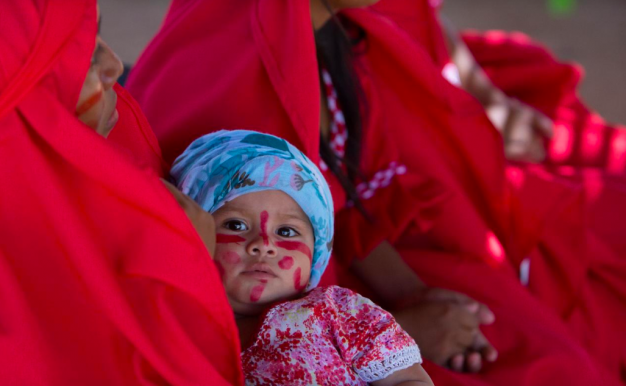
Debate rages on over therapeutic ‘paste’ for malnourished children
A therapeutic but contenious ‘peanut paste’ already successful in rural areas could be given to malnourished children living in the cities of India’s Maharashtra state.
The state government wants to provide the readymade paste after noticing what it says is the positive impact of energy-rich nutritious food and this type of paste among malnourished rural and tribal children.
The ready-to-go therapeutic paste, or EDNF, is made up of peanuts, oil, sugar, vitamins, milk powder and mineral supplments. It is already being used across Africa in some areas where severe malnutrition in childhood is rife, reports the Indian Express.
‘A willingness to expand the paste’
it was first used in rural areas in 2018, however its use remains controversial and it is yet to go through the official approval process in India,
The Maharashtra Integrated Child Development Services, according to the Indian Express, presented a formal statement to the Bombay High Court in October, in response to a public interest litigation against ENDF. The statement claimed that of nearly 15,000 severely malnourished children, almost half who had received the paste had improved to a normal weight, while almost a third had improved to ‘moderate malnourishment’. As a result, the government had ‘expressed its willingness’ to expand the paste to all severely malnourished children.
However a report by the Jan Arogya Abhiyan health body had earlier claimed there had been high numbers of children suffering side effects such as vomiting, diarrhoea and a refusal to eat.
‘Side effects’
Indra Mallo, Commissioner for Integrated Child Development Services (ICDS), part of India’s Ministry of Women and Child Development (WCD), is quoted as saying they were waiting for the centre’s approval to expand the scope of this therapeutic food to ‘anganwadis’ – a type of Indian child care facility – in urban areas. Maharashtra has almost 100,000 anganwadis, and the plan is to give out the paste to an estimated 8,500 severely malnourished children across these areas.
Experts however remain divided on the issue. Opponents say that while rural and tribal malnourishment is caused by hunger, it is the intake of junk food that has also significantly contributed to malnourishment in urban areas. The report adds that while the WCD wants to expand the paste to cities, they plan to limit it to severely malnourished children.
Latest UNICEF guidance
In February this year the United Nations Children’s Fund (UNICEF) published its latest guidance on the use of ready-to-use therapeutic food, highlighting the issues of supply, demand and increased supplier diversity. Go to the UNICEF website for this and previous updates.
UNICEF also recently published its flagship report, The State of the World’s Children 2019. Children, food and nutrition: Growing well in a changing world, which for the first time in 20 years examines the issue of children, food and nutrition, providing a fresh perspective on a rapidly evolving challenge. Download it here.




